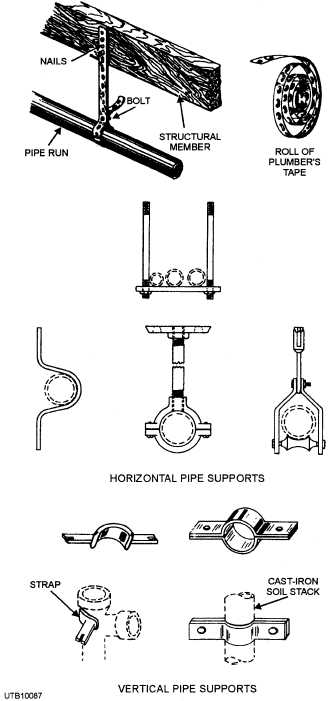main is filled slowly with water. Continue feeding until the water discharged at the other end of the section contains the desired residual chlorine. Let the chlorinated water remain in the contaminated unit or section for 24 to 48 hours. Then flush until the chlorine residual is only that amount normally in the supply. Make daily bacteriological analyses of water samples until the analyses show no further disinfection is required.
When a chlorinator is not available, feed a strong hypochlorite solution into the main from a pail through the highest hydrant top or valve with the bonnet removed. Add the hypochlorite and water until the main is full and the chlorine residual is about 50 ppm. Test the residual at the far end of the main. Bleed out air trapped in the line.
When the mains are to be disinfected under pressure by using supply or booster pumps, feed the chlorine into the main with chlorinators or hypochlorite feeders. Take care to ensure adequate and accurate distribution of the disinfecting agent when pumps are being used.
The use of dry calcium hypochlorite directly in mains is not uniformly effective because of unequal mixing with the water; therefore, when calcium hypochlorite is used, prepare a solution of this chemical beforehand.
EMERGENCIES
Natural contamination of water supplies can increase because of emergencies. Standby or portable chlorinators must be working to meet emergency disinfection requirements in water-supply components. This equipment should not be used to make drinking water safe after bombing, sabotage, or biological warfare has made water sources untreatable with chlorine for disinfection.
Where pipes are exposed aboveground and in the interior of buildings supplying air, water, or steam, they must be supported adequately to prevent sagging. This is because the weight of the pipes, plus the fluid in them, can cause breaks, strain joints, and cause leaks in valves.
The main supply pipe (vertical or horizontal) must be adequately supported to take its weight off the fitting and to prevent future leaks. Refer to figure 4-22 forsome methods of supporting cast-iron soil pipe and

Figure 4-22. - Methods of supporting pipes.
galvanized pipe. Fixture supply risers are pipes taken off of the supply pipes to furnish air, water, or steam to the fixtures being installed. These risers may be in the wall or exposed. They must be made tight and tested before being closed up in a wall. All vertical fixture risers should be supported at each floor level or in a change of direction. They should never be supported by the horizontal fixture supply branches.
Continue Reading